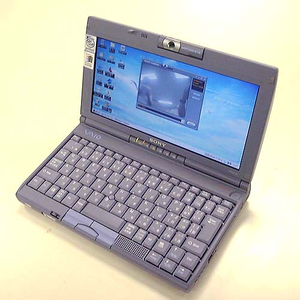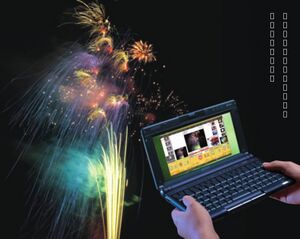C1* (First Revision): Difference between revisions
More actions
mNo edit summary |
No edit summary |
||
| Line 8: | Line 8: | ||
The laptop came bundled with a charger, a CD-ROM drive (depending on configuration), floppy drive, VGA adapter cable, phone cable, spare pointing nubs, usb cable for the floppy drive and a battery. Unlike the other PCG-C1 revisions, there were no extended battery options available. There were also some optional accessories such as ______? | The laptop came bundled with a charger, a CD-ROM drive (depending on configuration), floppy drive, VGA adapter cable, phone cable, spare pointing nubs, usb cable for the floppy drive and a battery. Unlike the other PCG-C1 revisions, there were no extended battery options available. There were also some optional accessories such as ______? | ||
It came in 5 different | It came in 5 different models, the PCG-C1 (the original model) and the ones that followed, the PCG-C1X/S/F/R, which all had a single mono speaker. The interior of this laptop (the motherboard) is virtually the same as the PCG-505 as it was released around a year after. It shows Sons’s miniaturisation skills, making a laptop so small yet powerful. | ||
==Detailed Specs== | ==Detailed Specs== | ||
Revision as of 16:58, 11 December 2023
This page is currently WIP!!

Overview

The first revision of the Sony VAIO PCG-C1 was released in August 1998 with the last model of the range being released in Spring 1999. The PCG-C1 was first released on September 19, 1998, in Japan only, with an initial production run of 5,000 units. It was the first laptop with a webcam, thus branded as the “PictureBook”, which rotates 180 degrees so that you could take pictures with it. There is a "capture" button located above the keyboard on the right which is optimal for taking pictures outside, without using the keyboard. It came with some bundled software such as the Camera Capture Utility which allowed for taking pictures easily and adding effects to the camera. A video demonstration will be shown soon in the resources section.
The laptop came bundled with a charger, a CD-ROM drive (depending on configuration), floppy drive, VGA adapter cable, phone cable, spare pointing nubs, usb cable for the floppy drive and a battery. Unlike the other PCG-C1 revisions, there were no extended battery options available. There were also some optional accessories such as ______?
It came in 5 different models, the PCG-C1 (the original model) and the ones that followed, the PCG-C1X/S/F/R, which all had a single mono speaker. The interior of this laptop (the motherboard) is virtually the same as the PCG-505 as it was released around a year after. It shows Sons’s miniaturisation skills, making a laptop so small yet powerful.
Detailed Specs
Processor: Mobile Pentium MMX 233MHz (PCG-C1), Mobile Pentium MMX 266MHz (PCG-C1X/S/F/R)
Graphics: NeoMagic MagicMedia256AV (NM2200)
Chipset: Intel 430TX
Memory: 64MB (Standard), 128MB (Official maximum of PCG-C1X/S/F/R) or 96MB (Official maximum of PCG-C1)
Display: 8.9” TFT LCD XGA 1024×480
Storage: 3.2GB IDE HDD (PCG-C1), 4.3GB IDE HDD (PCG-C1X/S/F/R)
Weight: 1.1kg
MSRP: ~€2000
